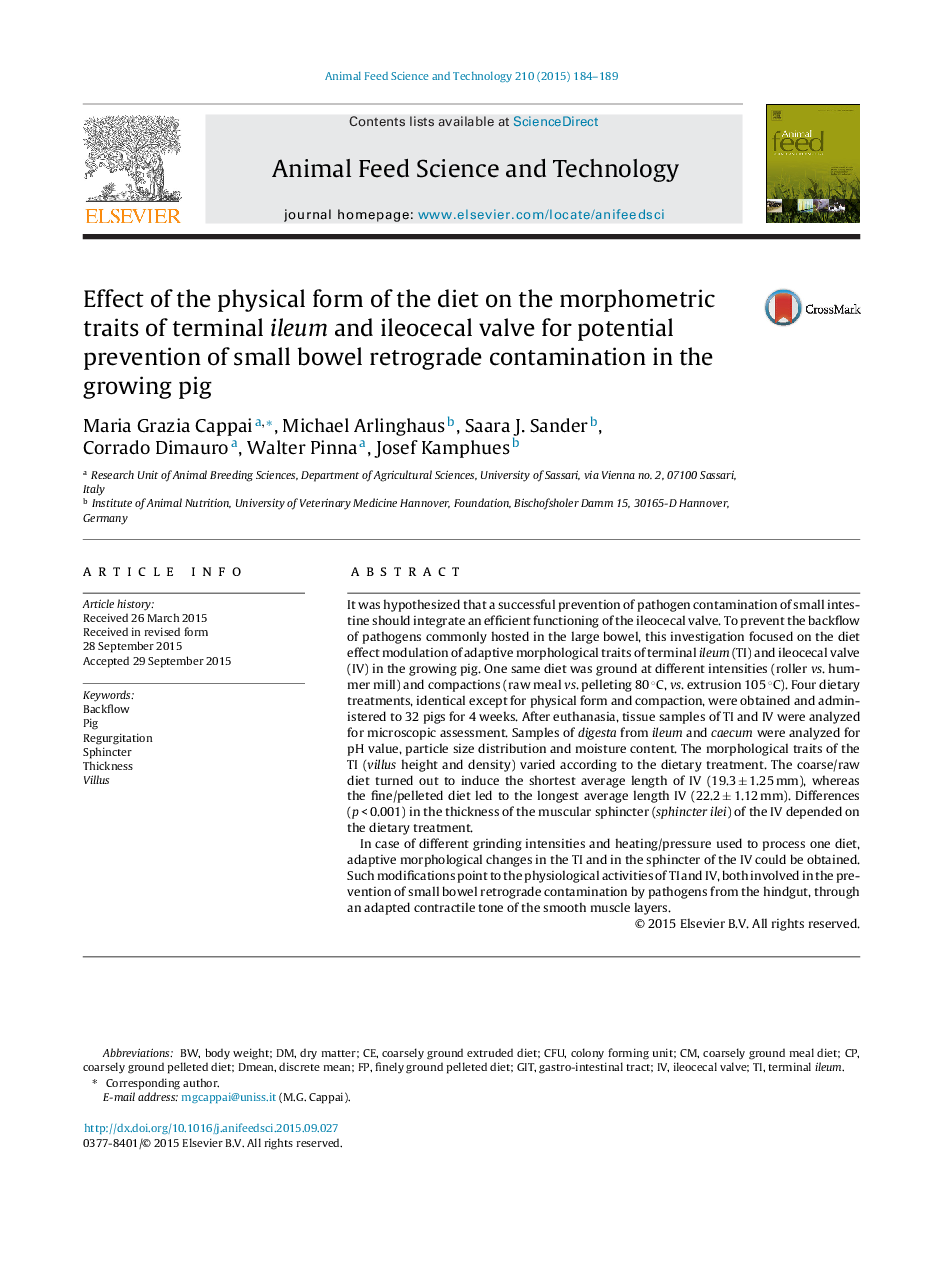| کد مقاله | کد نشریه | سال انتشار | مقاله انگلیسی | نسخه تمام متن |
|---|---|---|---|---|
| 2419328 | 1552375 | 2015 | 6 صفحه PDF | دانلود رایگان |

• Diet's physical forms (DPF) induce morphological changes in different organs of GIT.
• Such changes display adaptive responses to diverse mechanical stimuli from ingesta.
• The ileocecal valve (IV) resulted significantly affected as thickness is regarded.
• The prevention of digesta backflow into foregut can relate to IV morphometric traits.
• Prevention of retrograde contamination by hindgut pathogens should account also DPF.
It was hypothesized that a successful prevention of pathogen contamination of small intestine should integrate an efficient functioning of the ileocecal valve. To prevent the backflow of pathogens commonly hosted in the large bowel, this investigation focused on the diet effect modulation of adaptive morphological traits of terminal ileum (TI) and ileocecal valve (IV) in the growing pig. One same diet was ground at different intensities (roller vs. hummer mill) and compactions (raw meal vs. pelleting 80 °C, vs. extrusion 105 °C). Four dietary treatments, identical except for physical form and compaction, were obtained and administered to 32 pigs for 4 weeks. After euthanasia, tissue samples of TI and IV were analyzed for microscopic assessment. Samples of digesta from ileum and caecum were analyzed for pH value, particle size distribution and moisture content. The morphological traits of the TI (villus height and density) varied according to the dietary treatment. The coarse/raw diet turned out to induce the shortest average length of IV (19.3 ± 1.25 mm), whereas the fine/pelleted diet led to the longest average length IV (22.2 ± 1.12 mm). Differences (p < 0.001) in the thickness of the muscular sphincter (sphincter ilei) of the IV depended on the dietary treatment.In case of different grinding intensities and heating/pressure used to process one diet, adaptive morphological changes in the TI and in the sphincter of the IV could be obtained. Such modifications point to the physiological activities of TI and IV, both involved in the prevention of small bowel retrograde contamination by pathogens from the hindgut, through an adapted contractile tone of the smooth muscle layers.
Journal: Animal Feed Science and Technology - Volume 210, December 2015, Pages 184–189